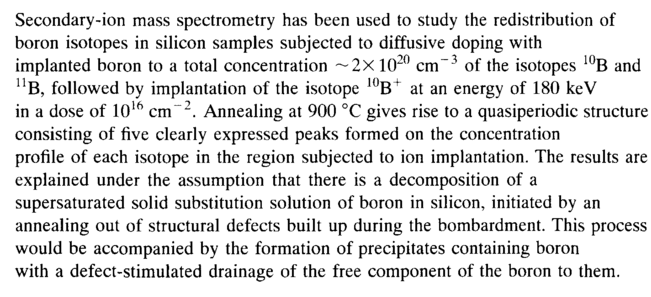Formation of a layered structure in the distribution of boron atoms initiated in silicon by ion implantation
Myasnikov A. M., Obodnikov V. I., Seryapin V. G., Tishkovskii E. G., Fomin B. I., Cherepov E. I.



 Home
Home